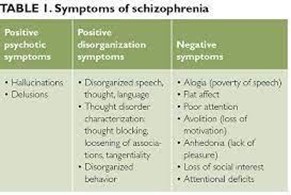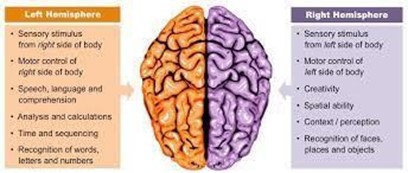A nurse is assessing a client who has schizophrenia. Which of the following findings should the nurse identify as a negative symptom of schizophrenia?
Magical thinking
Flat affect
Ideas of reference
Clang association
The Correct Answer is B
Choice A rationale:
Magical thinking is a positive symptom of schizophrenia, involving unrealistic beliefs or perceptions.
Choice B rationale:
A flat affect is a negative symptom of schizophrenia characterized by reduced emotional expression. Negative symptoms involve a decrease or loss of normal functioning, and a flat affect is one of the most common negative symptoms seen in schizophrenia.
Choice C rationale:
Ideas of reference are also a positive symptom, involving the belief that neutral or unrelated events have special significance related to oneself.
Choice D rationale:
Clang association is another positive symptom, involving the association of words based on similar sounds rather than meaningful connections

Nursing Test Bank
Naxlex Comprehensive Predictor Exams
Related Questions
Correct Answer is B
Explanation
Choice A rationale:
Applying lotion to the incisional site may not be recommended as it could potentially irritate the incision or interfere with wound healing.
Choice B rationale:
Avoiding blood pressure measurements on the affected arm is important to prevent compromising lymphatic flow and potentially exacerbating lymphedema, a common complication after a modified radical mastectomy.
Choice C rationale:
Applying deodorant under the affected arm is discouraged, as it may contain chemicals that could irritate the surgical area.
Choice D rationale:
While lifting heavy objects is generally discouraged after surgery, the specific weight mentioned (5.4 kg or 12 lb) is not consistently supported as a limitation in post- mastectomy care.
Correct Answer is C
Explanation
Choice A rationale:
Aphasia, or difficulty with language, is more commonly associated with left hemispheric stroke.
Choice B rationale:
Depression can be a common psychological reaction following stroke, but it is not a specific finding associated with right hemispheric stroke.
Choice C rationale:
Right hemispheric stroke can lead to loss of depth perception and spatial awareness due to its impact on the visual-spatial processing areas of the brain.
Choice D rationale:
Slow, cautious behavior is a common finding after stroke regardless of the affected hemisphere.

Whether you are a student looking to ace your exams or a practicing nurse seeking to enhance your expertise , our nursing education contents will empower you with the confidence and competence to make a difference in the lives of patients and become a respected leader in the healthcare field.
Visit Naxlex, invest in your future and unlock endless possibilities with our unparalleled nursing education contents today
Report Wrong Answer on the Current Question
Do you disagree with the answer? If yes, what is your expected answer? Explain.
Kindly be descriptive with the issue you are facing.
